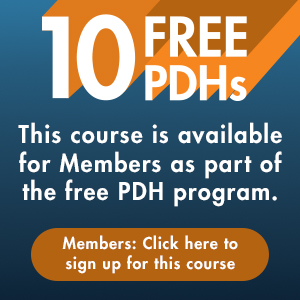

This product is available for group registration. Learn More
View Important Policies and System Requirements for this course.
INSTRUCTOR:
Josh Peterman, P.E., T.E., PTOE, M.ASCE
Course Length: 1.5 Hours
This webinar was co-sponsored by ASCE's Transportation and Development Institute (T&DI) and ASCE Continuing Education
The webinars offered by ASCE are the easiest ones for me to present groups. I appreciate how consistently ASCE organizes the webinars. - Dana M. Hardy, Executive Secretary City of Oklahoma Utilities Administration
Purpose and Background
This webinar provides guidance on the best practices for designing traffic signals. The materials will include guidance on layout of traffic signal indications, structural supports, intersection safety lighting, and bicycle and pedestrian accommodation. Information will also be offered regarding methods of vehicle detection. A variety of sources will be referenced including the MUTCD, ITE, AAHSTO, ADAAG, manuals developed by state highway departments and recent publications on traffic signal design.
Benefits and Learning Outcomes
You will learn the most important elements to consider in the design of traffic signals, based heavily on the guidance offered by the MUTCD. These elements will include the appropriate placement and arrangement of signal faces, supports, detection, and guidance on the placement of signal equipment and detection for bicycles and pedestrians. You also will obtain basic information on controllers, cabinets, and electrical service equipment.
Upon completion of this course, you will be able to:
- Obtain guidance on how to design the layout of a traffic signal under various modes of operation
- Gain an improved understanding on the placement of traffic-control devices and detection for bicycle and pedestrian traffic
- Recognize the best sources of information on designing traffic signals and signal systems
Assessment of Learning Outcomes
Students' achievement of the learning outcomes will be assessed via a short post-assessment (true-false, multiple choice and fill in the blank questions).
Who Should Attend
This webinar will benefit transportation professionals who work for consultants, cities, counties, and state agencies involved in designing, reviewing, or otherwise making decisions about the design of traffic signals. It is designed to provide the best information currently available on best practices for designing traffic signals under a variety of situations.
Outline
- Primary signal design references
- Traffic signals - purpose and warrants
- Alternatives to traffic signals
- Traffic control theory - phasing and timing
- Traffic signal supports
- Traffic signal heads - placement and arrangement
- Signage
- Intersection safety lighting
- Pedestrian accommodations
- Bicycle accommodations
- Integration with rail facilities
How to Earn your CEUs/PDHs
To receive your certificate of completion, you will need to complete a short on-line post-test and receive a passing score of 70% or higher within 1 year of purchasing the course.
How do I convert CEUs to PDHs?
1.0 CEU = 10 PDHs [Example: 0.1 CEU = 1 PDH]
